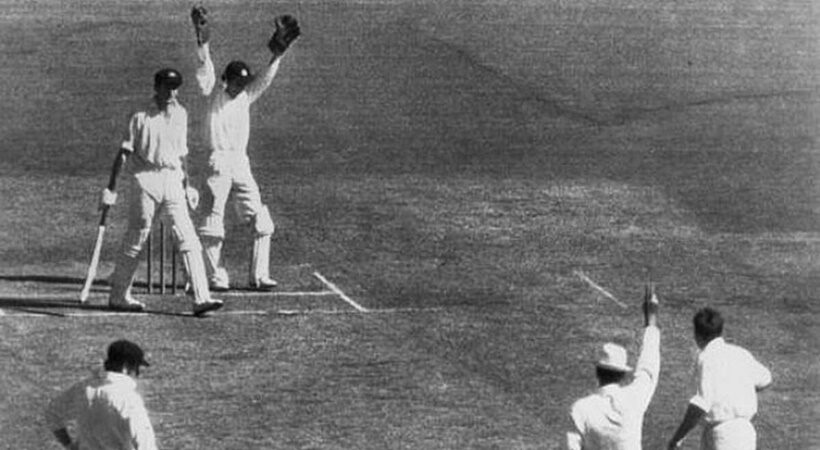India have become the first cricketing nation to have played 1,000 ODIs and the team made the landmark game all the more special for itself and the countrymen by steamrolling a hapless Windies at Ahmedabad. This is indicative of the way fortunes have swung from one end to another since the time the first ODI was played and till the time India turned up on the momentous occasion in Gujarat on 6 December 2022. When ODI was a new phenomenon in the world of cricket West Indians were a dominant side as teams across the world shuddered at the thought of taking on the Calypso cricketers. However, the power structure in the limited-overs at present has shifted dramatically to the other side of the spectrum.
This essay is not an excuse to highlight the depth to which Windies have plumbed in recent times but to find out how the 50-over game has evolved over the years. The changes that have crept into the format and how promising its future looks like.
First ODI: England VS Australia, 1971, MCG
It was a Test match where rains dictated terms for the first three days. So, when Rain Gods decided they have had enough of the mischiefs there was not enough time left to force a result. That is when the arch-rivals decided to play 48 overs a side game for the sake of the crowd who burned their wallets to turn up for the match. That is how the first ODI came into being and Australia won that game narrowly, by five runs. Resultantly, the exciting and thrilling aspects of the limited-overs format did not escape the ICC and it decided to conduct ODIs frequently. Unlike today the format then featured players in white clothing and had the red ball in operation.
60 Overs & No Fielding Restrictions
After the birth of a new format in cricket, 60 was the maximum overs allotted for each team. The Prudential World Cup materialized in 1975 in England and the bowlers were permitted a maximum of 11 overs in an innings. However, some hiccups cropped up in the absence of field restrictions as batters found it hard to get going due to the rigid nature of field settings throughout the game. Also, it became a tough ask for the teams batting first to set huge scores of 260-270 range.
1987 World Cup & How Coloured Outfits Came Into ODIs
The ICC decided to cut down the number of overs to 50 in the 1987 World Cup that was being held in India and in which Australians became the world champions. Since then the ODI became a 50-overs game and it still remains so.
In the latter part of the 1970s, Kerry Packer, an Oz media Moghul, initiated some new measures in the ODI cricket: coloured clothing, day-night affairs with lights, white ball and dark side screens. The first match took place in Melbourne on January 17, 1979. So, coloured gears and the white ball became a regular feature in the ODIs.
Fielding Restrictions
In the World Cup of 1992, just two fielders were permitted outside the circle in the first 15 overs. After the 15 overs, five fielders were allowed outside the circle. But soon monotony started to creep in, so the ICC opted for certain rule tweaks to do away with the mundane nature of the ODIs. Teams were permitted to have two people outside the circle in the initial 10 overs and two five-over powerplays came into existence with the call entirely upon the bowling side. In 2008, the rule was yet again tweaked by making one powerplay accessible to the batting side. Therefore two powerplays, batting and bowling, were introduced into the format.
In 2012, the bowling powerplay got eliminated and the number of fielders outside the inner circle was reduced from five to four.
Issues Still Persist
Well the ICC should be lauded for bringing in changes to give the 50-overs format a new lease of life in the face of shifting dynamics in the world of cricket. However, the new tweaks made the format extremely friendly for the batsmen and very harsh on bowlers. The field restrictions outside of the powerplays encouraged batsmen, even the not so prominent ones, to take, as Ravi Shastri constantly says, aerial route and made it impossible for bowlers to check the flow of runs towards the end. As a result, teams have now started to set scores in the range of 350-400 on a regular basis. But even these hefty totals are being chased with alarming regularity nowadays as new rules have literally reduced bowlers and fielders to mere spectators.
Is There A Glimmer Of Light At The End Of The Tunnel?
The ODI format despite undergoing a lot of changes is still struggling due to the fast-paced nature of T-20s. The powerplays have not helped ODIs to cut out the repetitive course the game takes after the initial 15 overs. Some people who know better have called for reducing the quota of overs further from the existing 50 and allowing five fielders outside the inner circle apart from a slew of other measures. To put it bluntly, even these won’t serve any purpose as the need of the hour is to strike the right balance between the bat and ball. This means arming the bowlers with more powers as ODI has totally turned into an exclusive affair of batters. Is anyone listening?



















